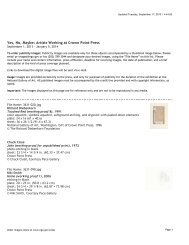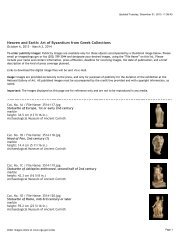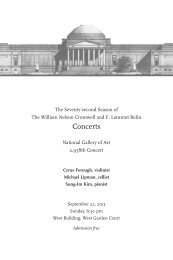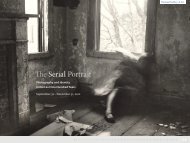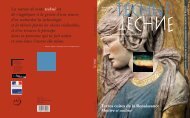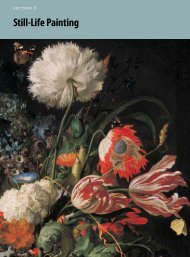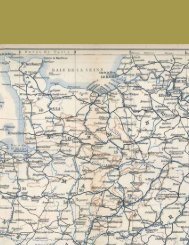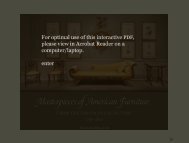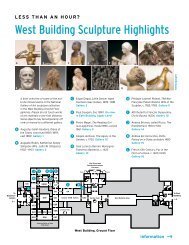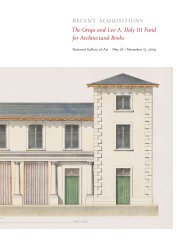2011 Annual Report - National Gallery of Art
2011 Annual Report - National Gallery of Art
2011 Annual Report - National Gallery of Art
Create successful ePaper yourself
Turn your PDF publications into a flip-book with our unique Google optimized e-Paper software.
10<br />
COLLECTING<br />
PAINTINGS Two exceptional paintings by<br />
Thomas Moran, one <strong>of</strong> the most celebrated landscape<br />
painters <strong>of</strong> the nineteenth century, entered<br />
the collection during the fiscal year. The first,<br />
The Juniata, Evening, was completed following a<br />
railroad excursion Moran and his brothers took<br />
to central Pennsylvania during the summer <strong>of</strong><br />
1864. Prior to his first journey to the American<br />
West in 1871, Moran produced a remarkable<br />
series <strong>of</strong> Pennsylvania landscapes that clearly<br />
reflect his admiration for the work <strong>of</strong> English<br />
artist J. M. W. Turner. As a young artist learning<br />
his craft, Moran frequently sketched in the<br />
forests surrounding Philadelphia, his home.<br />
In July 1864 he ventured further, traveling to<br />
central Pennsylvania where the Juniata, a major<br />
tributary <strong>of</strong> the Susquehanna, flowed through<br />
lush meadows and steep sandstone cliffs. The<br />
Juniata, Evening is filled with closely observed<br />
detail: grazing sheep, farm dwellings, a lone<br />
traveler, and most remarkably, a foreground<br />
vignette <strong>of</strong> an artist at work. With palette in<br />
hand and color box open on the ground, the<br />
artist (possibly Moran) is shown working<br />
on a landscape that duplicates the scene before<br />
the viewer.<br />
George Frederick Tyler, a Philadelphia banker<br />
and railroad executive, purchased The Juniata,<br />
Evening from the artist in September 1864.<br />
Privately owned ever since, the painting had<br />
never been exhibited publicly until placed<br />
on view in the American galleries at the <strong>Gallery</strong><br />
following its acquisition with generous funds<br />
provided by Max and Heidi Berry and Ann and<br />
Mark Kington.<br />
Seven years after completing The Juniata,<br />
Evening, Moran traveled to the far reaches <strong>of</strong> the<br />
western frontier and found the subject that<br />
would change the course <strong>of</strong> his career. Early in<br />
1871 he had been hired to illustrate a magazine<br />
article describing a wondrous region called<br />
Yellowstone. Before reaching Yellowstone,<br />
Moran stepped <strong>of</strong>f the train in Green River,<br />
Wyoming, and was captivated by the bands <strong>of</strong><br />
color that centuries <strong>of</strong> wind and water had<br />
revealed in the cliffs towering above the dusty<br />
railroad town. He went on to join F. V. Hayden’s<br />
expedition to Yellowstone and complete the<br />
watercolors that would later play a key role<br />
in the Congressional decision to set aside<br />
Yellowstone as America’s first national<br />
park. Over the years, however, the subject<br />
Moran returned to repeatedly was the western




